Are you looking to make your home more eco-friendly? You’re in the right place! In this article, we will guide you through practical steps and solutions to reduce your home’s ecological impact. From energy-efficient lighting options to sustainable materials for construction and renovation, we’ve got you covered. Discover how to conserve water, implement a waste management system, and reduce your carbon footprint through transportation choices. Let’s transform your home into an environmentally conscious haven together!
Assessing Your Home’s Current Ecological Impact
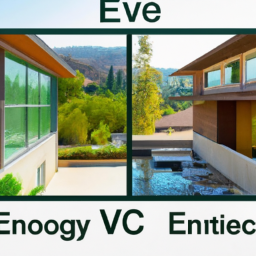
Assessing your home’s current ecological impact is the first step towards making it more eco-friendly. By evaluating energy consumption and assessing home insulation, you can identify areas for improvement and take proactive measures to reduce your environmental footprint.
Start by examining your energy consumption patterns. Look at your utility bills to determine how much electricity and gas you are using each month. This will give you an idea of where you can make changes to reduce your energy consumption. Consider investing in energy-efficient appliances and electronics, which can significantly lower your overall usage.
Next, assess the insulation in your home. Check for any gaps or leaks around windows, doors, and vents that may be causing drafts or allowing heat to escape during winter months. Properly insulating these areas will not only keep your home comfortable but also reduce the amount of energy needed for heating and cooling.
Consider conducting a professional energy audit if you are unsure about how to evaluate these factors yourself. An expert can provide valuable insights into other potential areas for improvement based on their assessment of your home’s insulation and energy consumption.
Taking these steps will help you understand the current ecological impact of your home and provide a foundation for making it more eco-friendly moving forward.
Energy-Efficient Lighting Options for Your Home

Switching to energy-efficient lighting options can help you reduce your electricity consumption and lower your utility bills. When it comes to choosing the right lighting for your home, LED (light-emitting diode) and CFL (compact fluorescent lamp) are two popular options that offer significant energy savings compared to traditional incandescent bulbs.
LED lights are highly efficient and have a long lifespan, making them a cost-effective choice in the long run. They consume less energy, generate less heat, and provide instant brightness. LED bulbs are available in various colors and can be dimmable, offering versatility in creating different lighting moods.
CFL bulbs are another eco-friendly option that uses 75% less energy than incandescent bulbs. They have a longer lifespan than incandescent bulbs but not as long as LED lights. CFLs take a little time to warm up and reach full brightness but provide excellent illumination once fully lit.
In addition to LED and CFL lighting options, consider utilizing natural lighting sources during the day. Opening curtains or blinds can allow sunlight into your home, reducing the need for artificial lighting during daylight hours.
Water Conservation Strategies and Technologies
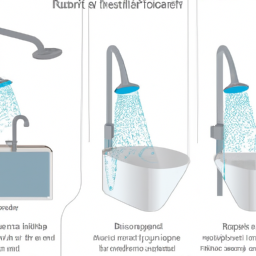
Using water-efficient technologies and adopting conservation strategies can help you reduce your water consumption and contribute to environmental sustainability. One effective way to conserve water is by using water-saving appliances. These appliances are designed to minimize the amount of water used without compromising performance. For example, low-flow showerheads and faucets reduce the flow rate of water while still providing a satisfying shower or efficient handwashing experience. Another option is installing a dual-flush toilet that allows for different amounts of water to be used depending on the waste being flushed.
Another strategy to consider is rainwater harvesting. This involves collecting rainwater from surfaces such as roofs and storing it for later use, rather than letting it runoff into storm drains. This collected rainwater can then be used for tasks like watering plants or flushing toilets, reducing your reliance on treated municipal water sources.
In addition to these technologies, simple habits like fixing leaks promptly, turning off the faucet while brushing your teeth, and only running full loads in dishwashers and washing machines can also make a significant difference in conserving water.
Sustainable Materials for Home Construction and Renovation
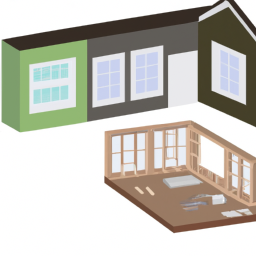
One way to create a more sustainable home is by incorporating renewable materials into the construction and renovation process. By choosing sustainable flooring options and eco-friendly insulation materials, you can significantly reduce your environmental impact while creating a healthier living space for yourself and your family.
When it comes to flooring, there are several sustainable options available. Bamboo flooring, for example, is a popular choice as it grows quickly and can be harvested without causing damage to the plant or surrounding ecosystems. Cork flooring is another great option, as cork is harvested from the bark of cork oak trees without harming them.
In terms of insulation materials, there are many eco-friendly choices that can help improve energy efficiency in your home. Recycled denim insulation is made from recycled cotton fibers and provides excellent thermal performance. Another option is cellulose insulation, which is made from recycled paper products treated with fire retardant chemicals.
Eco-Friendly Cleaning Products and Practices
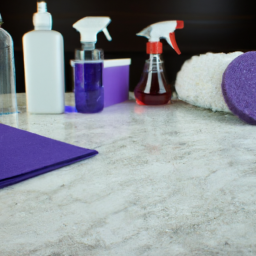
When it comes to cleaning, there are several ways to reduce your environmental impact and promote a healthier living environment. By using eco-friendly cleaning products and adopting green cleaning practices, you can make a positive difference in your home and beyond.
Firstly, let’s talk about eco-friendly cleaning products. These products are made from natural, non-toxic ingredients that are safer for both you and the environment. Look for labels that indicate they are biodegradable, plant-based or free from harmful chemicals such as chlorine, phthalates, and ammonia. You can easily find these products at your local grocery store or online.
In addition to using eco-friendly cleaning products, implementing green cleaning practices can further enhance your efforts. For instance, instead of reaching for disposable paper towels or wipes, opt for reusable microfiber cloths or sponges. Not only will this reduce waste but it will also save you money in the long run.
Another important aspect of green cleaning is conserving water. Be mindful of how much water you use when doing chores like mopping or washing dishes. Consider using a bucket instead of running water continuously and fix any leaks promptly to avoid unnecessary wastage.
Implementing a Waste Management System at Home
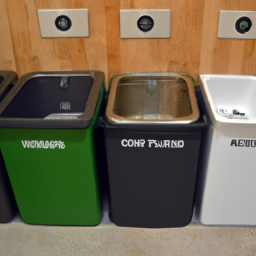
Implementing a waste management system at home can help reduce your environmental impact and promote a healthier living environment. Waste reduction is an essential step towards creating an eco-friendly home, and it starts with properly managing the waste you produce on a daily basis. One effective way to do this is through composting.
Composting is the process of breaking down organic materials, such as fruit and vegetable scraps, coffee grounds, and yard waste, into nutrient-rich soil. By composting these materials instead of throwing them in the trash, you not only divert waste from landfills but also create a valuable resource for your garden or plants.
To start composting at home, designate an area in your backyard or use a small bin indoors if space is limited. Ensure that your compost pile has the right balance of green (nitrogen-rich) and brown (carbon-rich) materials. Greens include food scraps and grass clippings, while browns consist of dry leaves or shredded paper. Turn the pile occasionally to aerate it and speed up decomposition.
Remember to avoid adding meat, dairy products, or oily items to your compost as they can attract pests or slow down the process. With proper care and attention, you’ll be able to transform kitchen scraps into nutrient-dense soil amendment for your plants while minimizing waste sent to landfills.
Reducing Your Home’s Carbon Footprint Through Transportation Choices
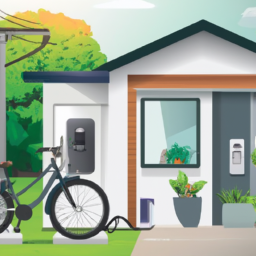
To reduce your home’s carbon footprint, consider using public transportation or carpooling for your daily commute. By opting for these alternatives, you can significantly decrease the emissions produced by your vehicle and contribute to a cleaner environment. Public transportation options such as buses, trains, and trams are not only more sustainable but also offer convenience and cost savings.
If public transportation is not readily available in your area or doesn’t suit your needs, another eco-friendly option to consider is investing in an electric vehicle (EV). Electric cars produce zero tailpipe emissions and have lower overall carbon footprints compared to traditional gasoline-powered vehicles. With advancements in technology, there are now several affordable EV options on the market with impressive driving ranges. Additionally, many countries offer incentives like tax credits and reduced charging rates to encourage the adoption of electric vehicles.
Incorporating Renewable Energy Sources Into Your Home
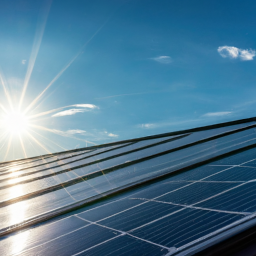
One option for incorporating renewable energy sources into your home is by installing solar panels on your roof. Solar panels harness the power of the sun and convert it into electricity, providing a clean and sustainable source of energy for your household. Not only does this help reduce your carbon footprint, but it can also save you money in the long run.
When considering solar panel installation costs, it’s important to take into account the various renewable energy incentives available to homeowners. Many governments and organizations offer financial incentives, such as tax credits or rebates, to encourage the adoption of renewable energy technologies. These incentives can significantly offset the initial investment of installing solar panels.
The cost of solar panel installation varies depending on factors such as the size of your system and your location. On average, however, you can expect to pay around $15,000 to $25,000 for a residential rooftop solar system before any incentives are applied.
It’s worth noting that while there is an upfront cost involved in installing solar panels, they typically have a lifespan of 25-30 years and require minimal maintenance. Over time, the savings on electricity bills will outweigh the initial investment.
Creating a Sustainable and Organic Garden at Home
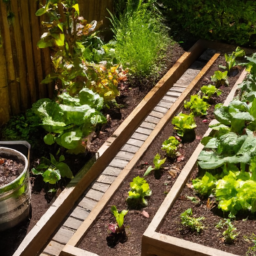
Did you know that creating a sustainable and organic garden can provide you with fresh and healthy produce right in your backyard? With the growing interest in organic gardening, it is now easier than ever to start your own urban garden. By incorporating organic composting techniques into your gardening routine, you can reduce waste, improve soil fertility, and grow nutritious fruits and vegetables.
Organic composting is the process of breaking down organic matter such as kitchen scraps, yard waste, and leaves into nutrient-rich compost. This natural fertilizer not only enriches the soil but also helps retain moisture, suppress weeds, and prevent soil erosion. To get started with organic composting at home, all you need is a compost bin or pile where you can layer green materials (like fruit peels and grass clippings) with brown materials (such as dried leaves or newspaper).
Urban gardening offers numerous benefits beyond just providing fresh food. It promotes biodiversity by attracting beneficial insects like bees and butterflies. Additionally, it reduces carbon footprint by eliminating the need for transportation from farm to table. Even if you have limited space in your backyard or live in an apartment without access to outdoor areas, there are still options available for urban gardening such as vertical gardens or container gardens.
Frequently Asked Questions
How Can I Calculate My Home’s Ecological Impact?
To calculate your home’s ecological impact, start by calculating your carbon footprint. This includes measuring the emissions from energy use, transportation, and waste. Next, focus on reducing energy consumption by making small changes such as using energy-efficient appliances and LED lighting. Insulating your home can also help save energy. Additionally, consider renewable energy sources like solar panels to further reduce your environmental impact. By taking these steps, you can make your home more eco-friendly and contribute to a sustainable future.
What Are Some Alternative Lighting Options for My Home?
LED vs CFL: Which is more energy efficient? When it comes to alternative lighting options for your home, LED (Light Emitting Diode) bulbs are the way to go. They are highly energy efficient and have a longer lifespan compared to CFL (Compact Fluorescent Lamp) bulbs. Additionally, solar powered lighting is a viable option for indoor use. It harnesses the power of the sun and can be used to light up your home while reducing your carbon footprint.
Are There Any Innovative Technologies for Water Conservation?
If you’re looking for innovative technologies to conserve water in your home, there are a few options you can consider. Smart irrigation systems use advanced sensors and weather data to optimize watering schedules, reducing water waste. Another option is rainwater harvesting, which involves collecting rainwater from your roof and storing it for later use in watering plants or flushing toilets. These technologies can help you save water and make your home more eco-friendly.
What Sustainable Materials Can I Use for Home Construction and Renovation?
When it comes to sustainable materials for home construction and renovation, there are plenty of options available. For flooring, you can consider sustainable choices like bamboo or cork, which are renewable and eco-friendly. As for insulation materials, there are alternatives to traditional options that can reduce energy consumption and minimize environmental impact. By opting for eco-friendly insulation materials and sustainable flooring options, you can make your home more environmentally friendly while still maintaining style and functionality.
Which Eco-Friendly Cleaning Products and Practices Are Most Effective?
To effectively maintain an eco-friendly home, it’s crucial to use effective eco-friendly cleaning products and practices. By opting for cleaning products that are labeled as environmentally friendly, you can minimize the harmful chemicals released into the environment. Additionally, adopting green cleaning practices such as using natural ingredients like vinegar and baking soda, reducing water usage, and recycling packaging can further contribute to a sustainable lifestyle. Making these choices will not only benefit the environment but also create a healthier living space for you and your family.
Conclusion
In conclusion, making your home eco-friendly is a smart and responsible choice that benefits both the environment and your wallet. By assessing your home’s ecological impact, you can identify areas for improvement and make necessary changes. From using energy-efficient lighting options to implementing water conservation strategies, there are numerous ways to reduce your home’s environmental footprint. Additionally, choosing sustainable materials for construction and renovation, using eco-friendly cleaning products, and incorporating renewable energy sources further contribute to a greener lifestyle. With these solutions in mind, creating a sustainable and organic garden at home completes the picture of an eco-friendly haven.